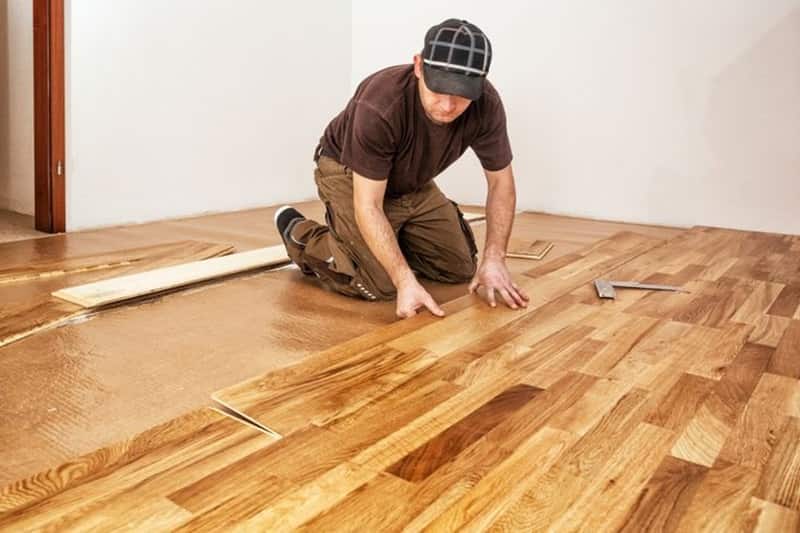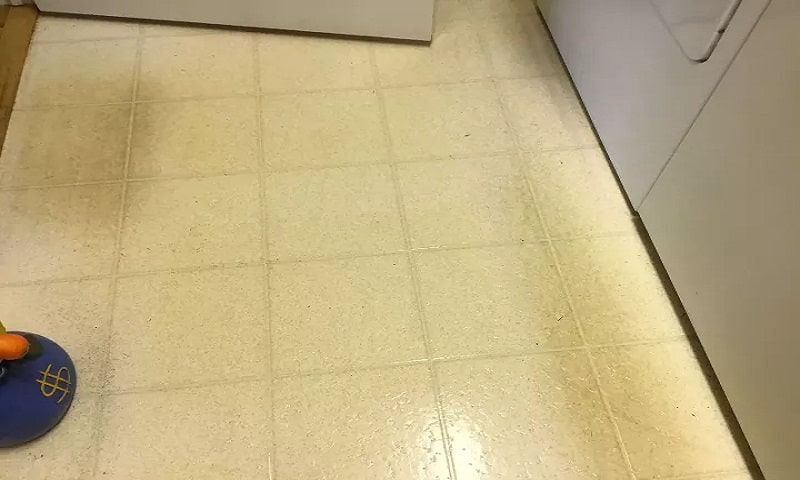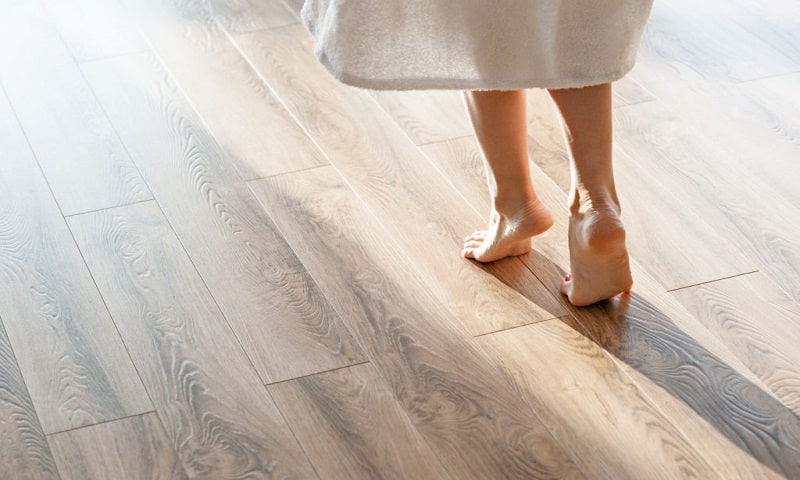Vinyl flooring are popular for its durability, versatility, and ease of maintenance. However, like any flooring material, it’s not immune to issues.
In this article, we’ll explore five common problems faced with vinyl flooring and provide practical solutions to help you keep your vinyl floors in top condition.
Problems Faced with Vinyl Flooring
1. Scratches and Scuffs
One of the most common issues with vinyl flooring is the development of scratches and scuffs, often caused by furniture movement, high heels, or the presence of abrasive dirt and debris.
Solution:
- Furniture Pads: Place furniture pads under the legs of tables, chairs, and other heavy pieces to prevent them from scratching the floor when moved.
- Regular Cleaning: Maintain a clean floor by sweeping or vacuuming regularly to remove dirt and debris that can cause scratches.
- Area Rugs: Use area rugs in high-traffic areas to reduce wear and tear on the vinyl surface.
2. Dents and Indentations
Heavy objects or the impact of a dropped item can lead to dents and indentations in vinyl flooring, marring its appearance.
Solution:
- Furniture Pads: As with scratches, furniture pads can help distribute the weight of heavy objects and prevent dents.
- Avoid High Heels: Encourage people to remove high-heeled shoes before walking on the vinyl floor to prevent indentations.
- Use Rugs: Area rugs can serve as a cushion, protecting the floor from heavy furniture or accidental impacts.
3. Peeling or Curling Edges
Over time, the edges of vinyl flooring may start to peel or curl, especially in areas with high humidity or moisture.
Solution:
- Maintain Proper Humidity: Use a dehumidifier in areas with high humidity to maintain a stable environment.
- Adhesive Solutions: If edges are peeling, reapply adhesive to secure them. Make sure to follow manufacturer guidelines for adhesive types.
- Seam Welding: For severe edge issues, consider professional seam welding to reinforce the edges.
4. Stains and Discoloration
Vinyl flooring is susceptible to staining and discoloration, which can result from spills, exposure to sunlight, or the use of improper cleaning agents.
If your vinyl floor is changing color to yellow you can find the solutions here.
Solution:
- Prompt Cleaning: Clean up spills immediately to prevent staining. Use a pH-neutral cleaner recommended by the flooring manufacturer.
- Protect from Sunlight: Use curtains or blinds to protect the floor from prolonged exposure to direct sunlight, which can cause discoloration.
- Area Rugs: Place area rugs in spots where staining is a concern, such as under dining tables.
5. Warping and Water Damage
Vinyl flooring is generally water-resistant, but excessive water or moisture can lead to warping, particularly at the seams and edges.
Solution:
- Quick Cleanup: Wipe up spills promptly to prevent water from seeping into seams or under the flooring.
- Water-Resistant Underlayment: Use a water-resistant underlayment to provide an additional barrier against moisture.
- Fixing Leaks: Address any plumbing or moisture issues in the room to prevent long-term water damage.
Challenges Faced while Installing Vinyl Floor
1. Subfloor Imperfections
The subfloor, the surface on which the vinyl is installed, may have imperfections such as cracks, bumps, or unevenness. Installing vinyl on an uneven subfloor can lead to an unsightly finished product.
Solution:
- Subfloor Preparation: Before installation, ensure the subfloor is clean, dry, and level. Repair any cracks or imperfections with a suitable patching compound.
- Use an Underlayment: In some cases, using an underlayment can help create a smoother surface for vinyl installation.
2. Adhesive Issues
Improper adhesive application or selection can lead to problems such as uneven bonding, loose edges, or adhesive bleeding through the seams.
Solution:
- Follow Manufacturer Guidelines: Always follow the manufacturer’s recommendations for the type of adhesive and application method. Different vinyl products may require specific adhesives.
- Proper Spread: Apply adhesive evenly and at the correct coverage rate to avoid bonding issues.
- Clean Excess Adhesive: If adhesive seeps through the seams, clean it immediately with a damp cloth to prevent visible residue.
3. Peaking or Tenting
Vinyl flooring may sometimes show signs of peaking or tenting, where the seams lift or form small peaks.
Solution:
- Proper Acclimation: Allow the vinyl flooring to acclimate to the room’s temperature and humidity for the recommended time.
- Installation Methods: Use the correct installation method, whether it’s full spread, perimeter adhered, or loose lay. The choice depends on the type of vinyl.
- Repair Seam Issues: If peaking occurs, carefully cut the raised seam and reapply adhesive to secure it back in place.
4. Gapping and Overlapping Seams
Gaps or overlaps at seams can occur during installation, resulting in an unattractive and unstable floor or we can say vinyl floor not laying flat.
Solution:
- Proper Seam Alignment: Ensure the seams align correctly, with no gaps or overlaps. Pay special attention to patterned vinyl to maintain consistency.
- Seam Adhesive: Use seam adhesive in seam areas to prevent gaps. Seam sealers can be used to protect against moisture penetration.
5. Bubbling and Wrinkling
Bubbles or wrinkles can appear under the vinyl, typically due to inadequate adhesive application or improper rolling of the vinyl during installation.
Solution:
- Rolling and Smoothing: After laying the vinyl, use a floor roller to ensure it adheres evenly and to remove air bubbles.
- Proper Adhesive Amount: Apply adhesive as recommended by the manufacturer, ensuring full and even coverage.
- Relaxation Time: Some vinyl types may require relaxation time, where the flooring is allowed to sit before final installation to prevent wrinkling.
Conclusion
Vinyl flooring is a versatile and resilient option for your home, but it’s not immune to certain issues. Scratches, dents, peeling edges, stains, and water damage are common problems that homeowners may encounter.
However, with proper care and preventative measures, you can address these issues effectively. By following the solutions outlined in this article, you can enjoy the benefits of vinyl flooring while minimizing its potential drawbacks.
Remember that regular maintenance and careful consideration of the environment in which the flooring is installed are key to preserving its quality and appearance.


